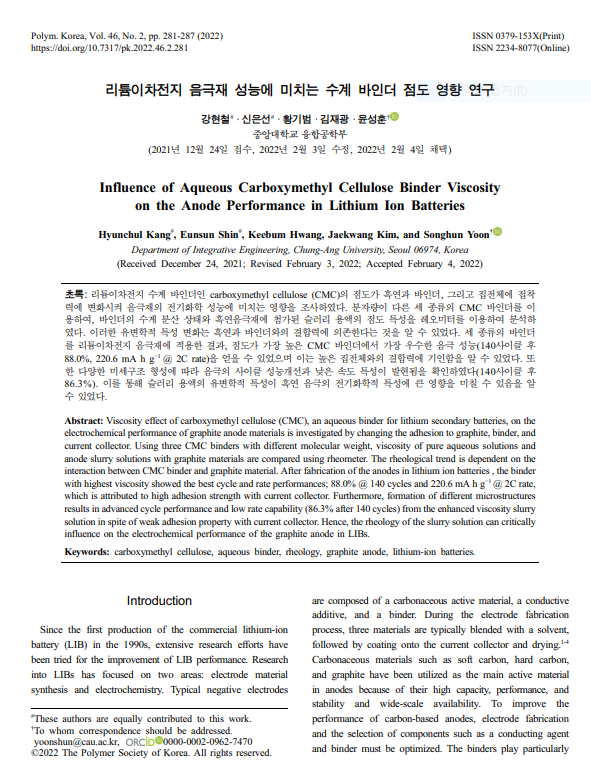
Influence of Aqueous Carboxymethyl Cellulose Binder Viscosity on the Anode Performance in Lithium Ion Batteries
Viscosity effect of carboxymethyl cellulose (CMC), an aqueous binder for lithium secondary batteries, on the
electrochemical performance of graphite anode materials is investigated by changing the adhesion to graphite, binder, and
current collector. Using three CMC binders with different molecular weight, viscosity of pure aqueous solutions and
anode slurry solutions with graphite materials are compared using rheometer. The rheological trend is dependent on the
interaction between CMC binder and graphite material. After fabrication of the anodes in lithium ion batteries , the binder
with highest viscosity showed the best cycle and rate performances; 88.0% @ 140 cycles and 220.6 mA h g−1 @ 2C rate,
which is attributed to high adhesion strength with current collector. Furthermore, formation of different microstructures
results in advanced cycle performance and low rate capability (86.3% after 140 cycles) from the enhanced viscosity slurry
solution in spite of weak adhesion property with current collector. Hence, the rheology of the slurry solution can critically
influence on the electrochemical performance of the graphite anode in LIBs.
|








